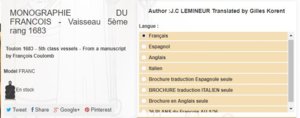A new book is available from ancre, and this could get very interesting for some of you.....
written by one of our Spanish friends, Adrian Sorolla
Introducción al Modelismo de Arsenal
(Introduction to arsenal modeling. )
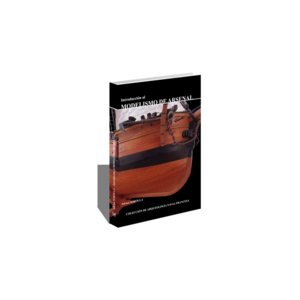
El motivo de esta guia es acompañar al modelista que quiere initiar en la modalidad de arsenal desde los primeros contactos con los planos hasta la conclusión del barco.
The object of this work is to support the model maker who intends to embark on the arsenal model making from the first contacts with the plans until the completion of the model.
Elección de la monografía.
Choice of monograph
In the elección de la monografía de "Le Rochefort", a Yacht de servicio de puerto, monografia de Gérard Delacroix, ha influido sobre todo es que está desiñada desde el principio para iniciarse en arsenal, el libreto incluye una gran cantidad de esquemas, explicaciones y dibujos que nos facilitaran en gran medida la comprensión de los planos y consecuentemente del trabajo.
The choice of the Rochefort monograph, service port yacht, Gérard Delacroix's monograph, was greatly influenced by the fact that it was entirely intended for those who want to start in arsenal and that the book contains a large number of diagrams, explanations and drawings that will greatly facilitate our understanding of the plans and consequently our work.
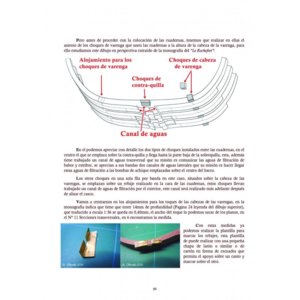
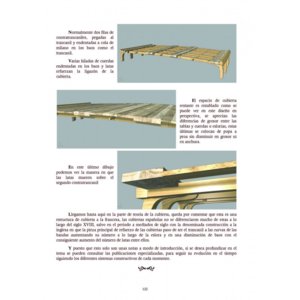
In moment the book is only available in spanish, but maybe ......
From the ancre web-page the Synopsis and the Content list (in spanish language)
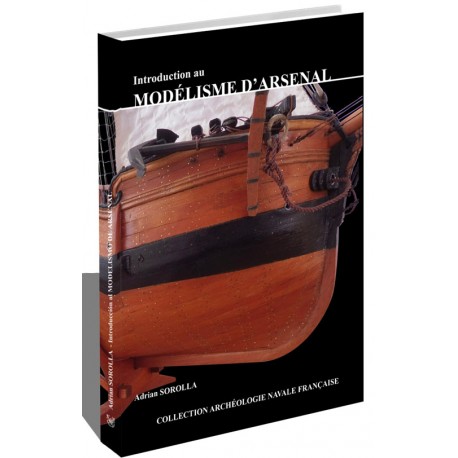
 ancre.fr
ancre.fr
Here the english google translation:
Aware that arsenal modeling has always caused a lot of respect among naval modelers, even though they are already very experienced in this trade. At the time of undertaking the start of a new ship model in arsenal from planes that are nothing more than some papers on the table, nothing of assembly box with the pieces already cut, slats already prepared in quantity and size as well as many other pieces already made, it scares a little.
But if we are already used to making our models from kits, the work in the arsenal modality that can be considered as the logical next step, although it can give us a little respect it does not have to scare us at all, since the knowledge in we have them in naval modeling and we will apply them in all phases as our construction progresses.
This guide is made just to help in this step, as its name indicates “Introduction to arsenal modeling guide”, will take us hand in hand in this process of initiation, in the first bower we will face, in an easy and enjoyable way with many, photos, many comments, analyzing and explaining each one the steps to follow; It introduces us to this world.
From the first contact with the plans to the complete conclusion of the model, which once finished will look bright in our collection, “the guide to introducing arsenal modeling,” covers all phases of construction
Although a monograph of a commercial model of easy acquisition has been chosen, the indications of the guide in general are applicable to any other monograph, only with the exception of the measures
With the achievement of the chapters the guide accompanies us, following a logical order of work one after another the different situations are resolved, always taking into account that not all modelers have the same tools, for which various forms of do the job, with more mechanized tools to other more manual solutions.
Choice of wood, interpretation of plans, easy realization of templates, techniques for woodworking, use of cutting tools and manuals, choice and application of different materials, brass, ebony, boxwood, lead, tinplate etc. They are explained in this guide, as well as the realization of the work tier for our model.
228 full color illustrated pages with more than 500 commented photographs.
Job presentation:
-Introduction
- Chapter I (Choice of wood, contact with planes and axial carpentry)
- Chapter II (The notebooks)
- Chapter III (The axial structure)
- Chapter IV (Settlement of the frames)
- Chapter V (Stern and bow closures)
- Chapter VI (Winery lining)
- Chapter VII (facilities in the cellar)
- Chapter VIII (Cover formation)
- Chapter IX (Deck formation II Embedded)
- Chapter X (External helmet lining (1) Preparation)
- Chapter XI (External helmet lining (2))
- Chapter XII (Deck equipment and bow castle)
- Chapter XIII (Alcazar and stern mirror)
- Chapter XIV (Annex, notes on trees and rigging)
some more excerpts from ancre - please take also a look at the attached pdf
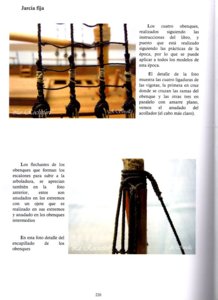
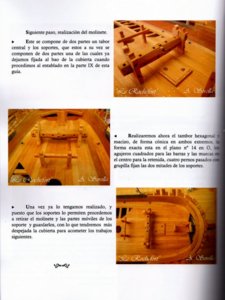


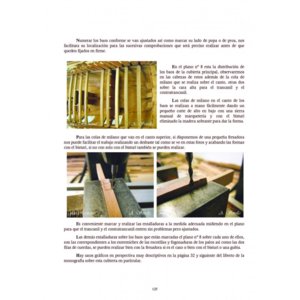
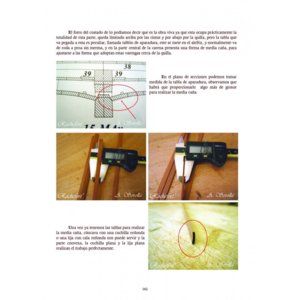
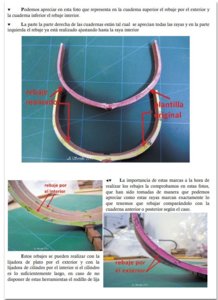
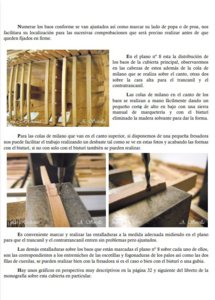
For non-spanish-speaking readers. The Spanish / French / English naval dictionary of Rear Admiral Antonio Terry y Rivas (1899) can be legally downloaded in digital form here:
 bvpb.mcu.es
bvpb.mcu.es
It is the Virtual Library of Bibliographic Heritage (BVPB), a site of the Spanish government, ministry of Culture.
the spanish original text of Synopsis and Content from ancre:
Consciente de que el modelismo de arsenal siempre ha causado muchos respeto entre los modelistas navales, aunque ya estén muy experimentados en este oficio. A la hora acometer el inicio de un nuevo modelo de barco en arsenal desde unos planos que no son más que unos papeles sobre la mesa, nada de caja de montaje con las piezas ya pre- cortadas, listones ya preparados en cantidad y tamaño así como otras muchas piezas ya fabricadas, asusta un poco.
Pero si ya estamos acostumbrados a realizar nuestros modelos a partir de kits, el trabajo en la modalidad de arsenal que puede considerarse como el lógico paso siguiente, si bien puede darnos un poco de respeto no tiene que asustarnos en absoluto, puesto que los conocimientos en materia de modelismo naval los tenemos y los iremos aplicando en todas las fases conforme avance nuestra construcción.
Esta guía esta realizada justamente para ayudar en este paso, como sus nombre indica “Guía de introducción al modelismo de arsenal”, nos llevara de la mano en este proceso de iniciación, en la primera enramada que vayamos a afrontar, de manera fácil y amena con muchas, fotos, muchos comentarios, analizando y explicando cada uno los pasos a seguir; nos introduce en este mundo.
Desde el primer contacto con los planos hasta la conclusión total del modelo, que una vez terminado lucirá con brillo propio en nuestra colección, “la guía de introducción al modelismo de arsenal”, cubre todas las fases de la construcción
Aunque se ha elegido, una monografía de un modelo comercial de fácil adquisición, las indicaciones de la guía en general son aplicables a cualquier otra monografía, solo con la salvedad de las medidas
Con la consecución de los capítulos la guía nos acompaña, siguiendo un orden lógico de trabajo uno tras otro las distintas situaciones se van resolviendo, siempre teniendo en cuenta que no todos los modelistas disponen de las mismas herramientas, para lo que se ofrecen diversas formas de realizar el trabajo, con unas herramientas más mecanizadas a otras soluciones más manuales.
Elección de las maderas, interpretación de los planos, realización fácil de las plantillas, técnicas para el trabajo de la madera, uso de las herramientas de corte y manuales, elección y aplicación de los diferentes materiales, latón, ébano, boj, plomo, hojalata etc. Son explicados en esta guía, así como la realización de la grada de trabajo para nuestro modelo.
228 páginas ilustradas a todo color con más de 500 fotografías comentadas.
Presentación del trabajo:
-Introducción
- Capítulo I (Elección de las maderas, contacto con los planos y carpintería axial)
- Capítulo II (Las cuadernas)
- Capítulo III (La estructura axial)
- Capítulo IV (Asentado de las cuadernas)
- Capítulo V (Cierres de popa y proa)
- Capítulo VI (Forro de la bodega)
- Capítulo VII (instalaciones en la bodega)
- Capítulo VIII (Formación de la cubierta)
- Capítulo IX (Formación de la cubierta II Entablado)
- Capítulo X (Forro exterior del casco (1) Preparación)
- Capítulo XI (Forro exterior del casco (2))
- Capítulo XII (Equipamientos de la cubierta y el castillo de proa)
- Capítulo XIII (Alcázar y espejo de popa)
- Capítulo XIV (Anexo, notas sobre la arboladura y la jarcia)
written by one of our Spanish friends, Adrian Sorolla
Introducción al Modelismo de Arsenal
(Introduction to arsenal modeling. )

El motivo de esta guia es acompañar al modelista que quiere initiar en la modalidad de arsenal desde los primeros contactos con los planos hasta la conclusión del barco.
The object of this work is to support the model maker who intends to embark on the arsenal model making from the first contacts with the plans until the completion of the model.
Elección de la monografía.
Choice of monograph
In the elección de la monografía de "Le Rochefort", a Yacht de servicio de puerto, monografia de Gérard Delacroix, ha influido sobre todo es que está desiñada desde el principio para iniciarse en arsenal, el libreto incluye una gran cantidad de esquemas, explicaciones y dibujos que nos facilitaran en gran medida la comprensión de los planos y consecuentemente del trabajo.
The choice of the Rochefort monograph, service port yacht, Gérard Delacroix's monograph, was greatly influenced by the fact that it was entirely intended for those who want to start in arsenal and that the book contains a large number of diagrams, explanations and drawings that will greatly facilitate our understanding of the plans and consequently our work.


In moment the book is only available in spanish, but maybe ......
From the ancre web-page the Synopsis and the Content list (in spanish language)

AN INTRODUCTION TO PLANKED ON FRAME SCALE MODEL SHIP BUILDING - Ancre
AN INTRODUCTION TO PLANKED ON FRAME SCALE MODEL SHIP BUILDING “DOCKYARD STYLE” An introduction to Planked on frame model ship building through more than 200 pages illustrated by approximately 500 colour photographs and captions. This guide includes explanations on all the techniques used...
Here the english google translation:
Aware that arsenal modeling has always caused a lot of respect among naval modelers, even though they are already very experienced in this trade. At the time of undertaking the start of a new ship model in arsenal from planes that are nothing more than some papers on the table, nothing of assembly box with the pieces already cut, slats already prepared in quantity and size as well as many other pieces already made, it scares a little.
But if we are already used to making our models from kits, the work in the arsenal modality that can be considered as the logical next step, although it can give us a little respect it does not have to scare us at all, since the knowledge in we have them in naval modeling and we will apply them in all phases as our construction progresses.
This guide is made just to help in this step, as its name indicates “Introduction to arsenal modeling guide”, will take us hand in hand in this process of initiation, in the first bower we will face, in an easy and enjoyable way with many, photos, many comments, analyzing and explaining each one the steps to follow; It introduces us to this world.
From the first contact with the plans to the complete conclusion of the model, which once finished will look bright in our collection, “the guide to introducing arsenal modeling,” covers all phases of construction
Although a monograph of a commercial model of easy acquisition has been chosen, the indications of the guide in general are applicable to any other monograph, only with the exception of the measures
With the achievement of the chapters the guide accompanies us, following a logical order of work one after another the different situations are resolved, always taking into account that not all modelers have the same tools, for which various forms of do the job, with more mechanized tools to other more manual solutions.
Choice of wood, interpretation of plans, easy realization of templates, techniques for woodworking, use of cutting tools and manuals, choice and application of different materials, brass, ebony, boxwood, lead, tinplate etc. They are explained in this guide, as well as the realization of the work tier for our model.
228 full color illustrated pages with more than 500 commented photographs.
Job presentation:
-Introduction
- Chapter I (Choice of wood, contact with planes and axial carpentry)
- Chapter II (The notebooks)
- Chapter III (The axial structure)
- Chapter IV (Settlement of the frames)
- Chapter V (Stern and bow closures)
- Chapter VI (Winery lining)
- Chapter VII (facilities in the cellar)
- Chapter VIII (Cover formation)
- Chapter IX (Deck formation II Embedded)
- Chapter X (External helmet lining (1) Preparation)
- Chapter XI (External helmet lining (2))
- Chapter XII (Deck equipment and bow castle)
- Chapter XIII (Alcazar and stern mirror)
- Chapter XIV (Annex, notes on trees and rigging)
some more excerpts from ancre - please take also a look at the attached pdf








For non-spanish-speaking readers. The Spanish / French / English naval dictionary of Rear Admiral Antonio Terry y Rivas (1899) can be legally downloaded in digital form here:
Biblioteca Virtual de Patrimonio Bibliográfico
Biblioteca digital del Ministerio de Cultura y Deporte con manuscritos, libros impresos, fotografías históricas, materiales cartográficos, partituras y demás materiales del Patrimonio Bibliográfico Español
It is the Virtual Library of Bibliographic Heritage (BVPB), a site of the Spanish government, ministry of Culture.
the spanish original text of Synopsis and Content from ancre:
Consciente de que el modelismo de arsenal siempre ha causado muchos respeto entre los modelistas navales, aunque ya estén muy experimentados en este oficio. A la hora acometer el inicio de un nuevo modelo de barco en arsenal desde unos planos que no son más que unos papeles sobre la mesa, nada de caja de montaje con las piezas ya pre- cortadas, listones ya preparados en cantidad y tamaño así como otras muchas piezas ya fabricadas, asusta un poco.
Pero si ya estamos acostumbrados a realizar nuestros modelos a partir de kits, el trabajo en la modalidad de arsenal que puede considerarse como el lógico paso siguiente, si bien puede darnos un poco de respeto no tiene que asustarnos en absoluto, puesto que los conocimientos en materia de modelismo naval los tenemos y los iremos aplicando en todas las fases conforme avance nuestra construcción.
Esta guía esta realizada justamente para ayudar en este paso, como sus nombre indica “Guía de introducción al modelismo de arsenal”, nos llevara de la mano en este proceso de iniciación, en la primera enramada que vayamos a afrontar, de manera fácil y amena con muchas, fotos, muchos comentarios, analizando y explicando cada uno los pasos a seguir; nos introduce en este mundo.
Desde el primer contacto con los planos hasta la conclusión total del modelo, que una vez terminado lucirá con brillo propio en nuestra colección, “la guía de introducción al modelismo de arsenal”, cubre todas las fases de la construcción
Aunque se ha elegido, una monografía de un modelo comercial de fácil adquisición, las indicaciones de la guía en general son aplicables a cualquier otra monografía, solo con la salvedad de las medidas
Con la consecución de los capítulos la guía nos acompaña, siguiendo un orden lógico de trabajo uno tras otro las distintas situaciones se van resolviendo, siempre teniendo en cuenta que no todos los modelistas disponen de las mismas herramientas, para lo que se ofrecen diversas formas de realizar el trabajo, con unas herramientas más mecanizadas a otras soluciones más manuales.
Elección de las maderas, interpretación de los planos, realización fácil de las plantillas, técnicas para el trabajo de la madera, uso de las herramientas de corte y manuales, elección y aplicación de los diferentes materiales, latón, ébano, boj, plomo, hojalata etc. Son explicados en esta guía, así como la realización de la grada de trabajo para nuestro modelo.
228 páginas ilustradas a todo color con más de 500 fotografías comentadas.
Presentación del trabajo:
-Introducción
- Capítulo I (Elección de las maderas, contacto con los planos y carpintería axial)
- Capítulo II (Las cuadernas)
- Capítulo III (La estructura axial)
- Capítulo IV (Asentado de las cuadernas)
- Capítulo V (Cierres de popa y proa)
- Capítulo VI (Forro de la bodega)
- Capítulo VII (instalaciones en la bodega)
- Capítulo VIII (Formación de la cubierta)
- Capítulo IX (Formación de la cubierta II Entablado)
- Capítulo X (Forro exterior del casco (1) Preparación)
- Capítulo XI (Forro exterior del casco (2))
- Capítulo XII (Equipamientos de la cubierta y el castillo de proa)
- Capítulo XIII (Alcázar y espejo de popa)
- Capítulo XIV (Anexo, notas sobre la arboladura y la jarcia)





